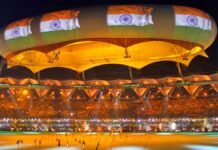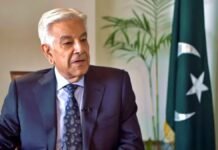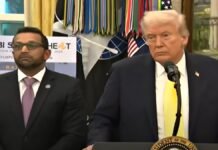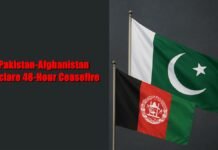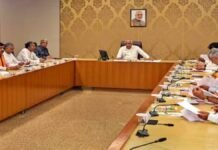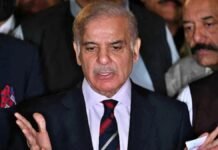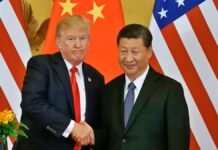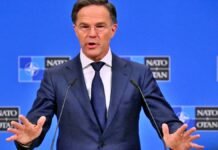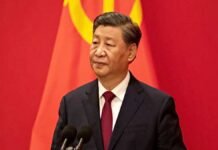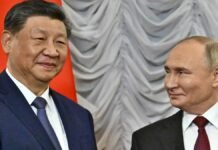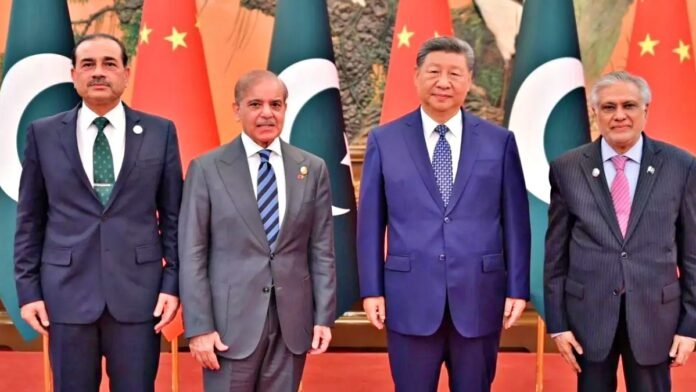
Key Points:
- Historic first: Army Chief Field Marshal Asim Munir becomes first Pakistan army chief to attend SCO Summit in official capacity
- Power dynamics exposed: Munir arrived separately on Monday, drawing media attention away from PM Sharif who had been at summit since Saturday
- Joint meeting with Xi Jinping: Both Sharif and Munir met Chinese President Xi on September 2nd, with viral photos sparking debate about Pakistan’s real power center
- Strategic military ties: Pakistan-China defense cooperation highlighted as 80% of Pakistan’s military equipment comes from China
- Symbolic presence: Munir’s attendance at China’s military parade scheduled for September 3rd underscores growing military-to-military cooperation
- Social media buzz: Pakistanis on X describe Munir as “real ruler” and Sharif as “puppet” following viral meeting photos
New Delhi: The 2025 Shanghai Cooperation Organization (SCO) Summit in Tianjin, China, has inadvertently become a showcase of Pakistan’s complex power dynamics, with Army Chief Field Marshal Asim Munir stealing the spotlight from Prime Minister Shehbaz Sharif in what many observers are calling a revealing moment for Pakistani politics.
Historic Military Participation at SCO
Field Marshal Asim Munir made history by becoming the first serving Pakistani army chief to attend an SCO Summit in official capacity. His arrival in Tianjin on Monday, September 1st, marked a significant departure from traditional diplomatic protocols and immediately shifted media focus away from Prime Minister Sharif, who had been participating in the summit since Saturday.
The timing and manner of Munir’s arrival were particularly noteworthy. Unlike typical diplomatic visits where the army chief might accompany the prime minister, Munir traveled separately in keeping with protocols that dictate the PM and army chief do not tour together. This separation, however, only served to amplify the attention surrounding his unprecedented participation.
Viral Meeting Photos Spark Constitutional Debate
The most striking moment came on Tuesday, September 2nd, when both Prime Minister Sharif and Army Chief Munir met with Chinese President Xi Jinping in Beijing’s Great Hall following the summit’s conclusion. The meeting, which also included Deputy Prime Minister and Foreign Minister Ishaq Dar, has generated intense discussion across Pakistani social media platforms.
Photos of the tripartite meeting quickly went viral, with Pakistani citizens expressing concerns about the country’s power structure. Social media users were quick to point out that Munir’s prominent presence alongside the elected prime minister in such high-level diplomatic engagements reinforces perceptions that “Asim Munir is the real ruler of Pakistan, Shahbaz Sharif is only a puppet”.
Deputy PM Ishaq Dar attempted to frame the meeting positively, sharing images on X with the caption: “Under the visionary leadership of President Xi Jinping, our evergreen strategic partnership has strengthened further, promoting peace, connectivity and shared prosperity”. He praised Chinese hospitality in both Beijing and Tianjin, while Prime Minister Sharif described Xi as a “symbol of strength and stability” and emphasized the China-Pakistan Economic Corridor (CPEC) as evidence of the two nations being “Iron Brothers”.
Strategic Military Cooperation Takes Center Stage
The meeting highlighted the crucial military dimension of Pakistan-China relations. Over 80% of Pakistan’s military equipment is sourced from China, making the defense partnership a cornerstone of bilateral ties. During the discussions, President Xi emphasized China’s readiness to work with Pakistan on upgraded versions of CPEC and the China-Pakistan Free Trade Agreement, while specifically requesting that Pakistan ensure the safety of Chinese workers, projects, and institutions.
Both leaders are scheduled to attend a grand military parade in Beijing on Wednesday, commemorating the 80th anniversary of the Chinese People’s War of Resistance Against Japanese Aggression. The parade will showcase China’s latest military technology, including aerial, ground, electronic and missile systems – displays of particular interest to Pakistani military officials.
Summit Context and Regional Dynamics
The SCO Summit itself proved challenging for Pakistani diplomacy. While PM Modi enjoyed warm bilateral meetings with both Xi Jinping and Vladimir Putin, Pakistani Prime Minister Sharif faced a more isolated experience. Reports suggest that Sharif struggled to remain relevant at the summit, with some describing his first day as a “bumpy ride” marked by technical fumbles and limited engagement with other leaders.
The contrast was particularly stark in group photos and informal interactions. In one widely circulated image, PM Modi was seen in deep discussion with Kazakhstan’s President while Sharif lingered in the background with his back turned. At the traditional group photo of leaders, the Indian and Pakistani prime ministers were positioned at opposite ends of the lineup, reflecting ongoing tensions over cross-border terrorism and regional security.
Constitutional Questions and Civil-Military Balance
Munir’s prominent role at the summit has reignited long-standing debates about Pakistan’s civil-military balance. His participation in high-level diplomatic meetings typically reserved for elected officials has drawn criticism from constitutional experts who argue that such involvement blurs the lines between military and civilian authority.
The army chief’s separate meetings with Chinese officials and his preparation for possible discussions with Russian President Putin underscore the Pakistani military’s decisive role in the country’s foreign policy and diplomacy. This dynamic was further highlighted when Munir joined Sharif in private sessions with Iranian President Masoud Pezeshkian and Azerbaijan Prime Minister Ali Asadov.
Historical Precedent and Future Implications
This marks a significant shift from previous SCO summits where Pakistani army chiefs maintained a lower profile. Munir’s predecessor, General Qamar Javed Bajwa, had met with Chinese leadership during visits to China but never in such a prominent multilateral setting.
The timing is also significant given recent geopolitical developments. Munir’s July 2025 visit to China followed a rare lunch hosted by US President Donald Trump – an unusual gesture that raised eyebrows in Beijing considering Pakistan-China’s “all-weather ties”. His prominent presence at the SCO Summit can be seen as a rebalancing toward China amid these complex diplomatic relationships.
Looking Ahead: Military Diplomacy and Regional Security
As Pakistan continues to navigate complex regional security challenges, from Afghanistan to Kashmir, the visible role of military leadership in international forums raises questions about the country’s democratic institutions and decision-making processes. The viral nature of the Xi-Sharif-Munir meeting photos has only intensified these discussions among Pakistani citizens and political analysts.
The precedent set by Munir’s SCO participation may influence future Pakistani diplomatic engagements, particularly as the country seeks to balance relationships with China, the United States, and regional powers while addressing domestic economic challenges and security concerns.
The summit ultimately served as a mirror reflecting Pakistan’s unique civil-military dynamics on the international stage, with global audiences witnessing firsthand the complex power structures that continue to define Pakistani governance and foreign policy decision-making.




